People are drawn to Sufism universally and is also a concept which is perhaps misunderstood across the globe. In….
People are drawn to Sufism universally and is also a concept which is perhaps misunderstood across the globe. In….
People are drawn to Sufism universally and is also a concept which is perhaps misunderstood across the globe. In actual, Sufism equals spirituality means spirit and essence within religion. Like many other Islamic states, Pakistan also has a great influence on Sufism. The Sufis and Auliya-e-Ikram played a vital role in Sufism which makes them superior from common masses. Affection and true love with them draw people to their shrines and tombs or even whatever the reason behind visiting, shrine have been more frequently visited in Pakistan.
Have a look regarding the unique and remarkable structure of 10 shrines situated in Pakistan.
The shrine is related to a Sufi mystic and scholar, Hazrat Sultan Bahoo-R.A (1630-1691). Located in Jhang, Punjab province, Pakistan. His beautiful shrine has four-sided minarets made of white marble. The artwork of colored stones embellishes the architecture.
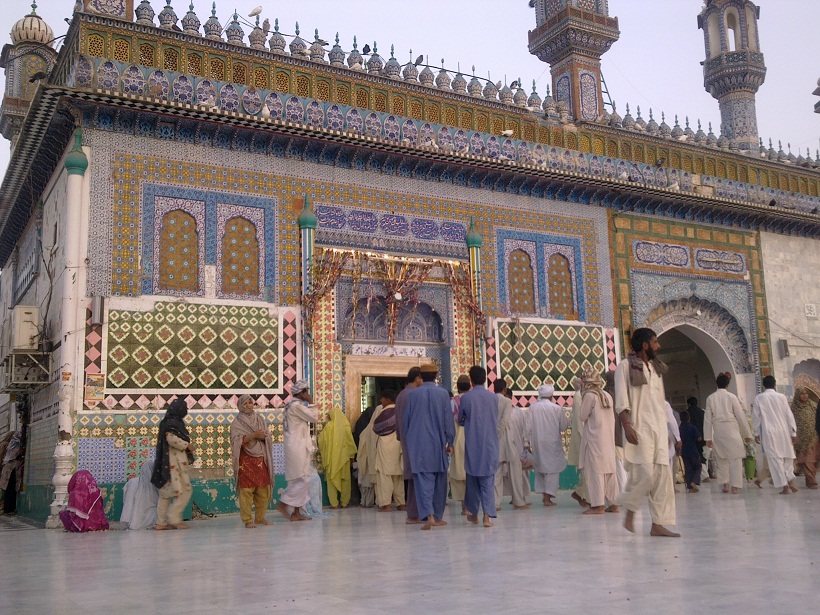
Photo by ZMAlam
Located in Lahore, Punjab, Shrine of Hazrat Data Ganj Bakhsh-R.A (990-1077) is one of the most visited shrines all over Pakistan. The shrine of Hujwiri is housed in a Mughal era tomb crafted of carved white marble. The tomb is surrounded by a massive marble courtyard, while a new educational institution at the shrine complex utilizes modernist architecture.
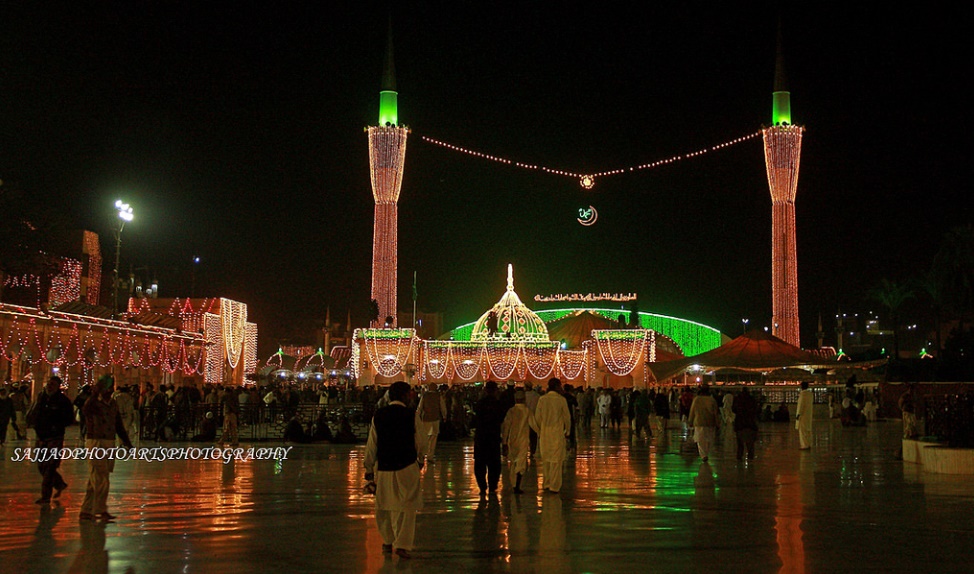
Photo by Sajjad Bhutti
A Muslim mystic of the eighth century, Hazrat Abdullah Shah Ghazi-R.A (720-773) got his last resting place in his shrine, located in Clifton, Karachi, Sindh. The shrine is made of a high, square chamber and a green-and-white striped dome, decorated with Sindhi tilework, flags, and buntings. The shrine attracts a steady stream of devotees who caress the silver railing around the burial place and drape it with garlands of flowers.
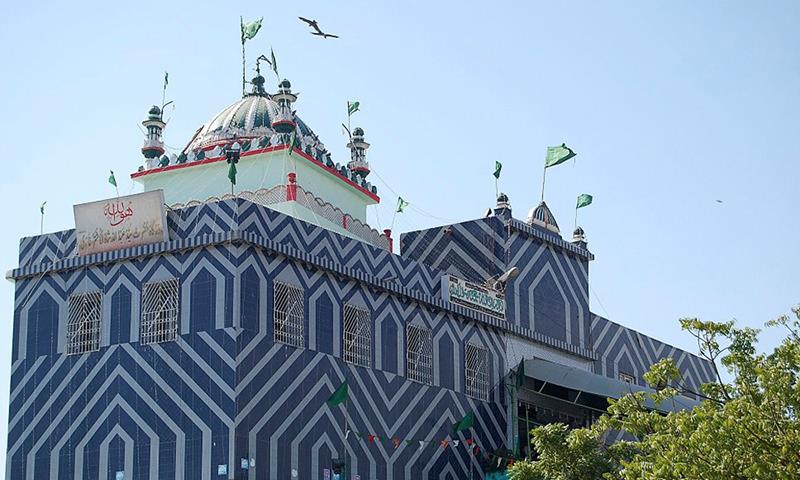
Photo yby Vaqar Ahmed
Another great Sufi of 18th century, Hazrat Baha-ud-Din Zakariya-R.A(1170-1267) who was a disciple of Sheikh Shahab-ud-Din Soharwardi, renowned Sufi master. His shrine is situated in Multan, Punjab. His mausoleum is a square of 51 ft 9 in (15.77 m), measured internally. Above this is an octagon, about half the height of the square, which is surmounted by a hemispherical dome. The mausoleum was almost completely ruined during the Siege of Multan in 1848 by the British, but was soon afterward restored by the Muslims.
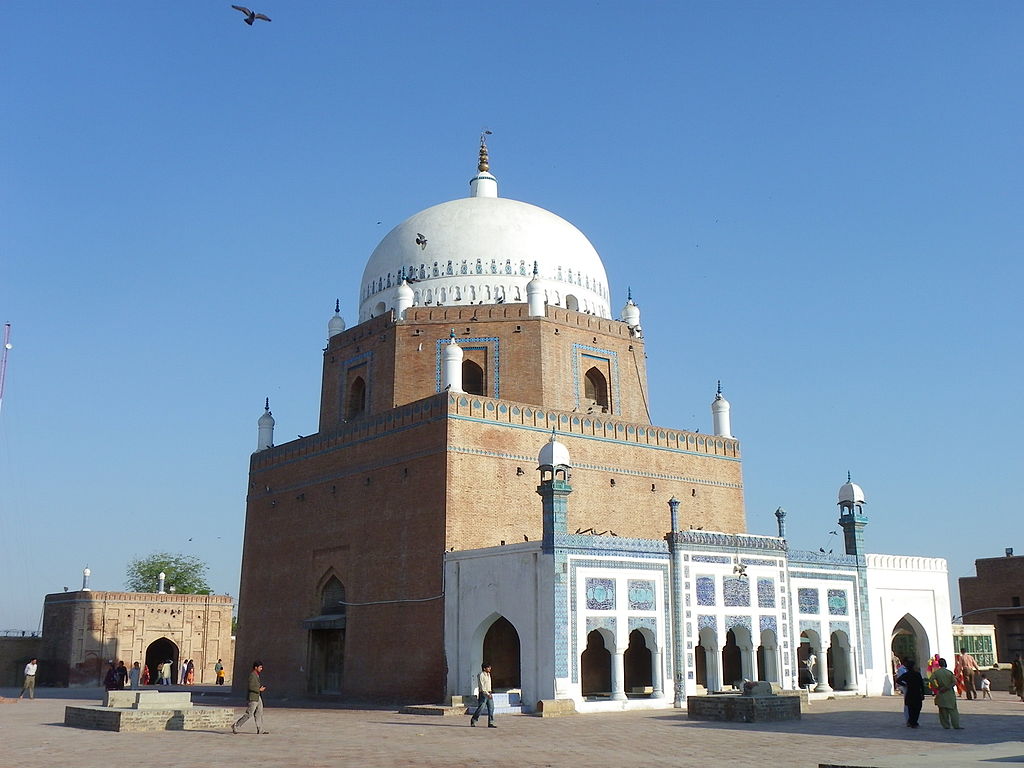
Photo by asood Ahmad Khan
Renowned Sindhi sufi poet, Hazrat Sachal Sarmast-R.A (1739-1827) was belonged to Sindh. He served the concept of Sufism prominently by writing poetry in 7 languages. His shrine is in Sindh Province.
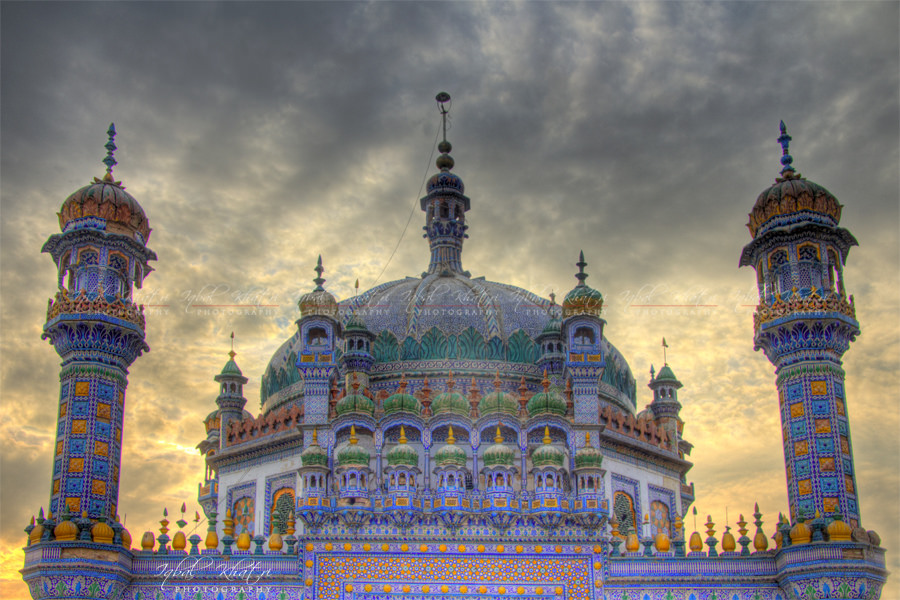
Phoro by Sadiq Ali
Sufi saint, Hazrat Baba Fariduddin-R.A (1173–1266 or 1188-1280) belonged to Chishti Order and lived in Punjab. Pakpattan is his burial place in Punjab region. The small Shrine of Baba Farid is made of white marble with two doors, one facing east and called the Nūrī Darwāza or ‘Gate of Light’, and the second facing north called Bahishtī Darwāza, or ‘Gate of Paradise’. There is also a long covered corridor. Inside the tomb are two white marbled graves. One is Baba Farid’s and the other is his elder son’s.
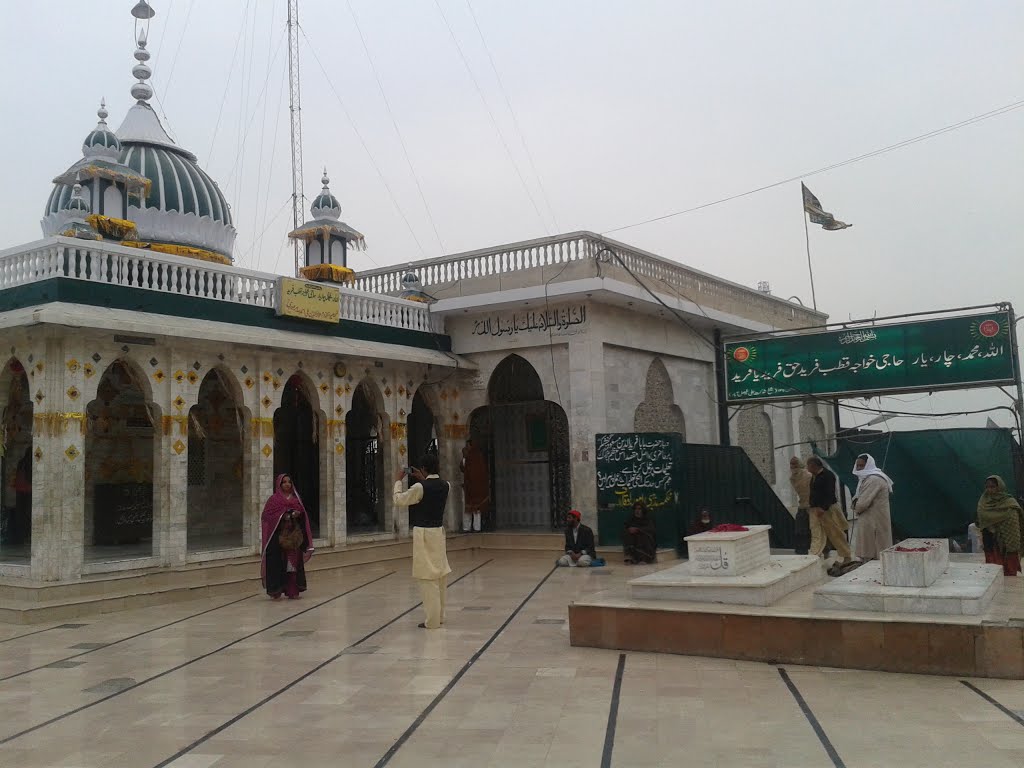
Photo by Hasham
Hazrat Khwaja Ghulam Farid-R.A (1845-1901) was Punjabi poet of Subcontinent and belonged to Christina-Nizami order. Buried in Rajanpur, Punjab.
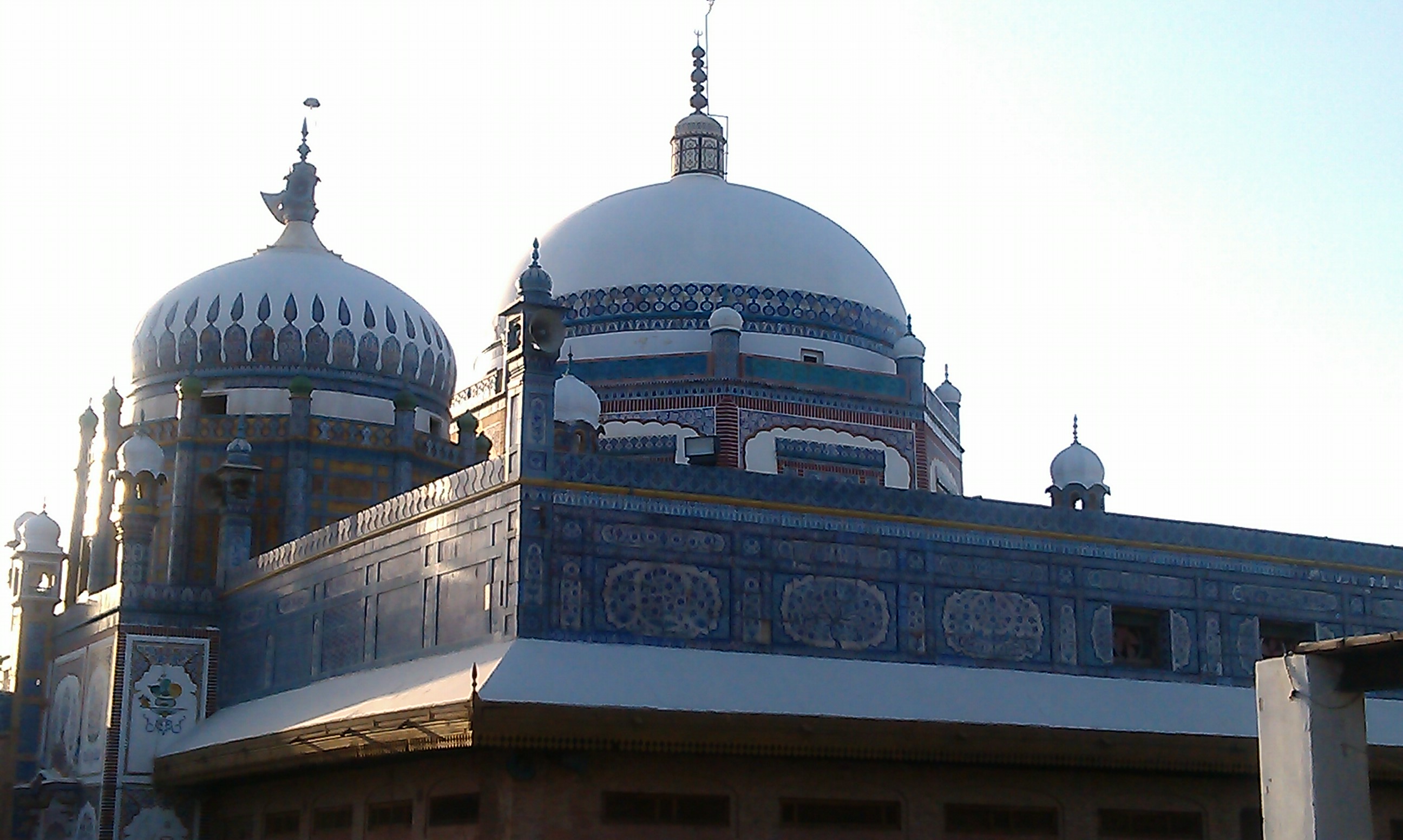
Photo by Altaf Ali
Hazrat Shah Abdul Latif (R..A) (1689-1752) was a mystic, Sufi saint and a prominent Sindhi poet. His work in poetry and Tasawwuf is unforgettable and is evergreen in every era. His distinctive shrine is located in Matiari, Sindh province. But Shah Latif was much more than a sufi saint. Scholars who have studied his poetry find home-spun knowledge interwoven with spiritual connotations in his superb and scholarly renditions.
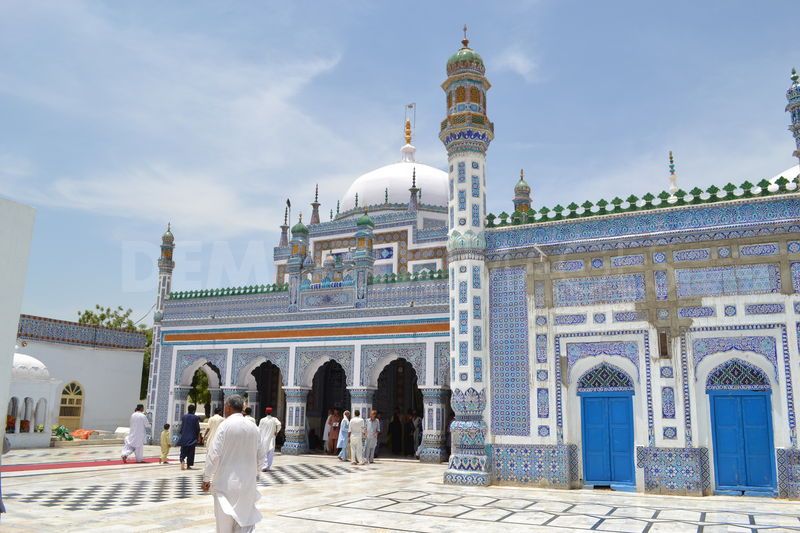
Photo by Mansoor Baseer
The city of Lahore is known as the heart of Punjab. It’s renowned for having many sacred shrines, the shrine of a great Sufi saint, Hazrat Shah Hussain (R.A) also located here. His tomb and shrine is located at the Baghbanpura precincts, adjacent to the Shalimar Gardens Lahore, Pakistan. His Urs (annual death anniversary) is celebrated at his shrine every year during the “Mela Chiraghan” (“Festival of Lights”). Madho’s tomb lies next to Hussain’s in the shrine.

Photo by Haji Ali
Another beautifully constructed shrine of a Sufi Hazrat Shah Jamal (R.A) (1588-1671), situated in Lahore, Pakistan. He was from the Qadiriyya, Suhrawardiyya order.
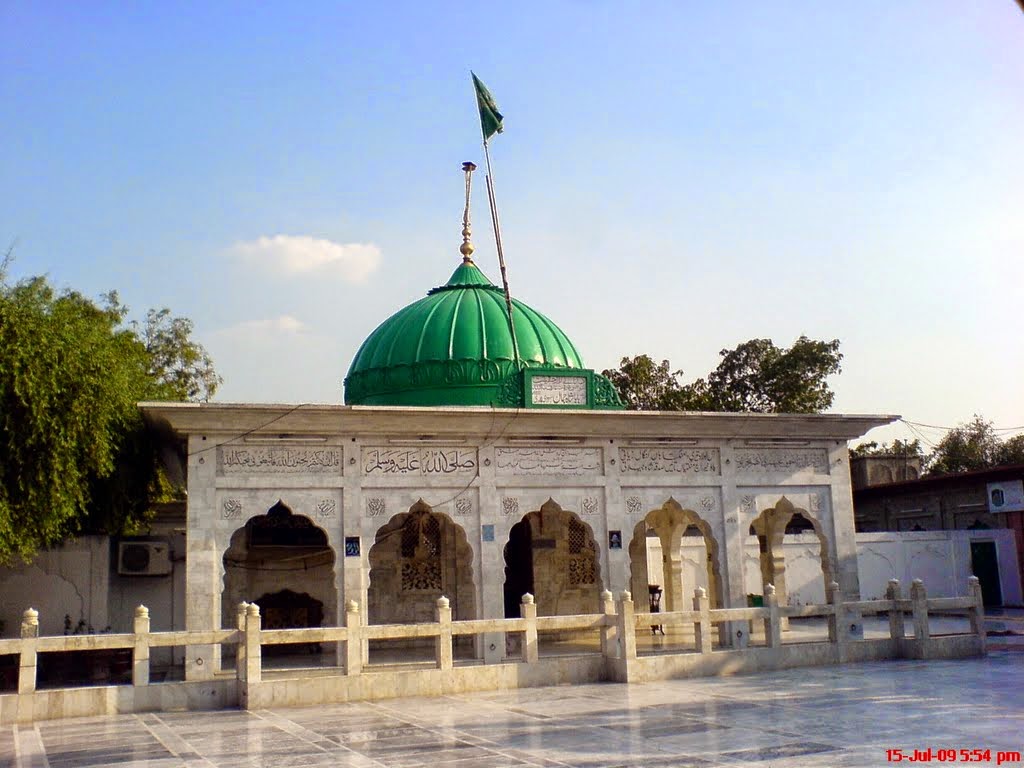
Photo by Alim Ahsan
